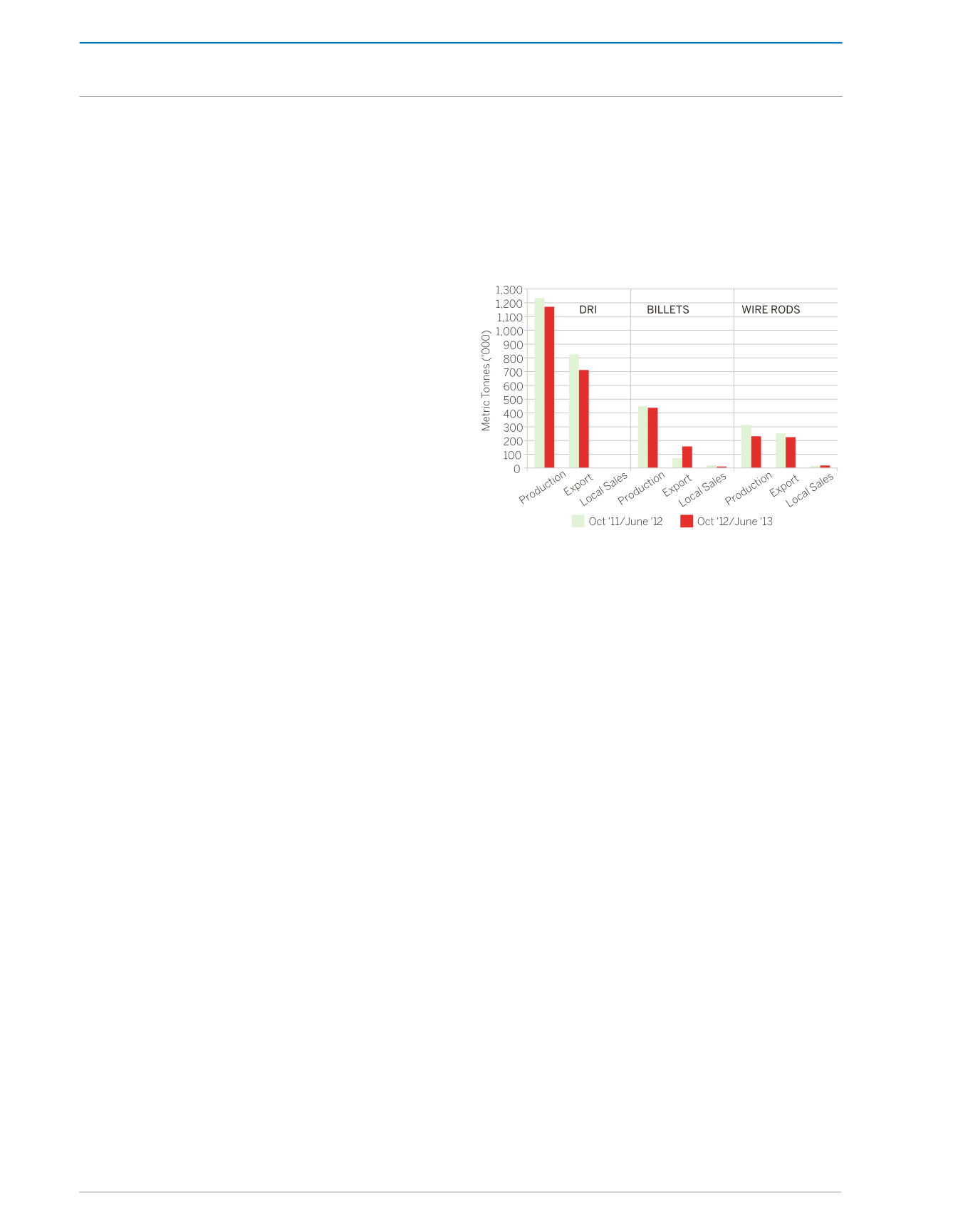
REVIEW OF THE ECONOMY 2013
28
SUSTAINING GROWTH, SECURING PROSPERITY
In chemicals and non-metallic minerals, the
second largest manufacturing sub-sector,
growth is expected to rise sharply to 15.3 percent
in 2013, following a contraction of 0.2 percent in
2012. This strong growth expectation is based
primarily on a recovery in the production of
cement and concrete products, such as blocks
and bricks. Growth is also projected for thewood
and related products sub-sector, though at a
much reduced level of 3.1 percent, compared to
the 29.0 percent rate one year earlier.
With the exception of a flat performance in
miscellaneous manufacturing (0.04 percent),
declines are expected in the remaining
manufacturing sub-sectors. The sharpest
contraction (4.2 percent) is anticipated in
assembly type and related industries, the third
largest manufacturing sub-sector, on account
of an anticipated fall in the production of iron
and steel products. This is nonetheless an
improvement on the sub-sector’s estimated 8.1
percent contraction in 2012.
Food, beverages and tobacco, the largest
manufacturing sub-sector, is expected to
record a marginal decline of 0.4 percent in 2013,
following an estimated expansion of 1.5 percent
one year earlier. A slightly larger contraction
of 1.4 percent is also projected for the printing,
publishing etc. sub-sector.
IRON AND STEEL
Over the period October 2012 to June 2013, iron
and steel production declined by 7.6 percent,
which was a further weakening from the 0.8
percent decline recorded one year earlier.
The most significant decline was related to
the production of wire rods which fell by 20.6
percent, from 300.2 thousand metric tonnes to
238.4 thousand metric tonnes. More moderate
declines were experienced in respect of the
production of direct reduced iron (DRI) which
fell by 6.5 percent, from 1,252.7 thousandmetric
tonnes to 1,170.8 thousand metric tonnes, and
the production of billets, which fell by 2.1 percent
from 458.1 thousand metric tonnes to 448.7
thousand metric tonnes
(Appendix 10 and
Figure 5)
.
Figure 5:
Production, Exports and Local Sales
of Iron and Steel
Source: ArcelorMittal Point Lisas Ltd.
Overall, iron and steel exports declined by 5.2
percent during the October to June period,
from 1,171.0 thousand metric tonnes to 1,110.5
thousand metric tonnes, notwithstanding an
88.6 percent increase in exports of billets from
85.9 thosand metric tonnes to 161.9 thousand
metric tonnes. The robust export performance
of billets was outweighed by declines in export
sales for both DRI and wire rods of 12.8 percent
and 11.8 percent respectively. The decline in
export volumes was exacerbated by falling
prices for both DRI and wire rods.
The three-month contract price per tonne for
DRI exports which averaged US$345.00 for the
first six months of fiscal 2013 was 2.4 percent
below the average price of US$353.47 obtained
during the corresponding period of fiscal 2012.
The price of wire rods declined fromUS$620.00
per tonne in October 2012 to US$600.00 per
tonne in December, trended upwards over the
next four months and thereafter, it peaked at
US$615.00 per tonne in March 2013, before
easing to US$586.25 per tonne in June. In
the case of billets, the export price rose from
THE REAL ECONOMY


